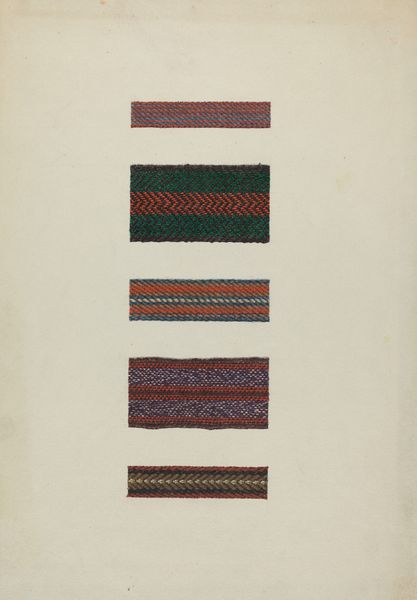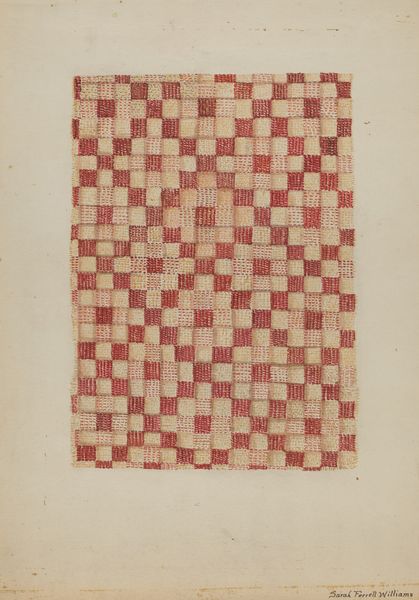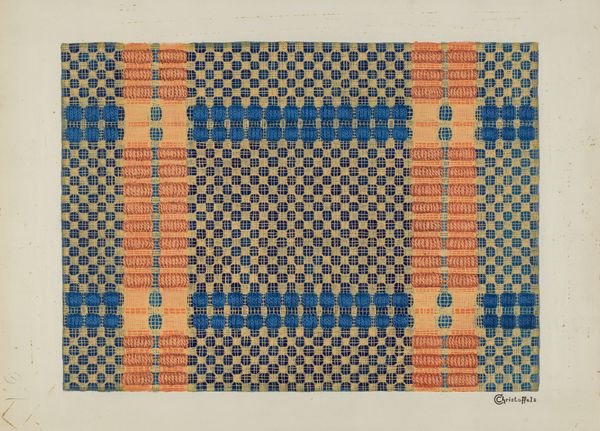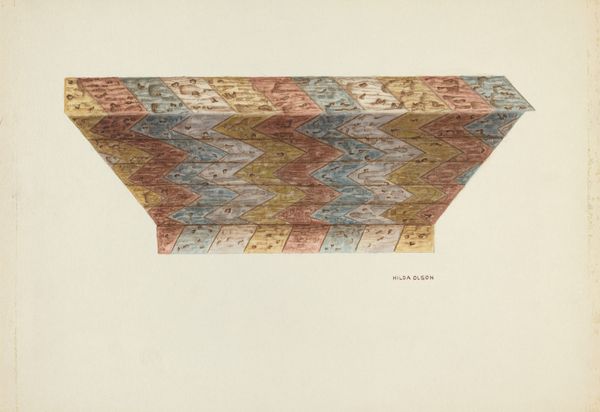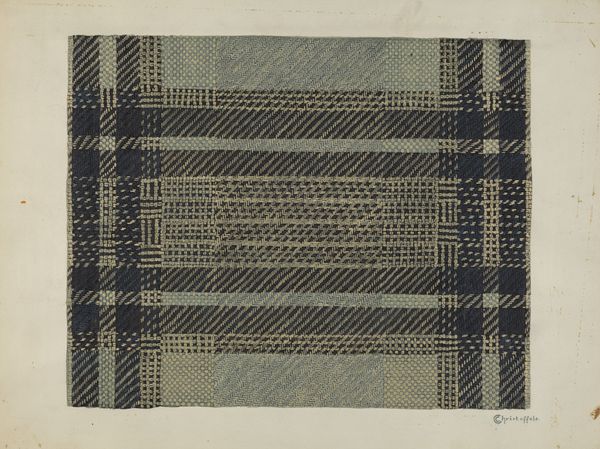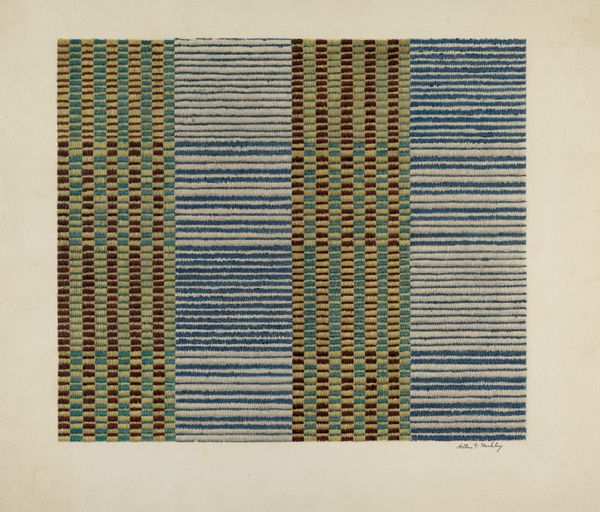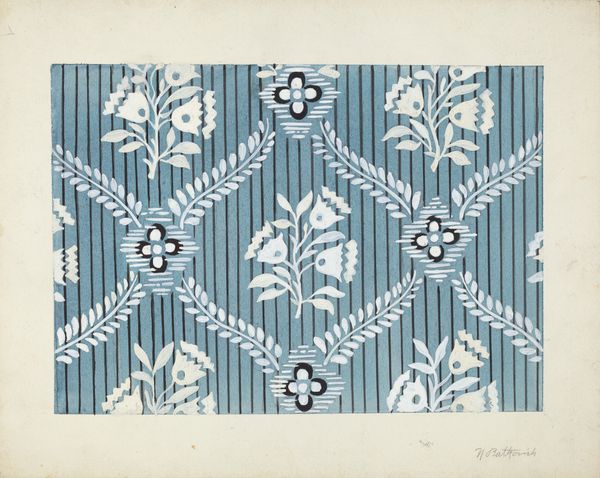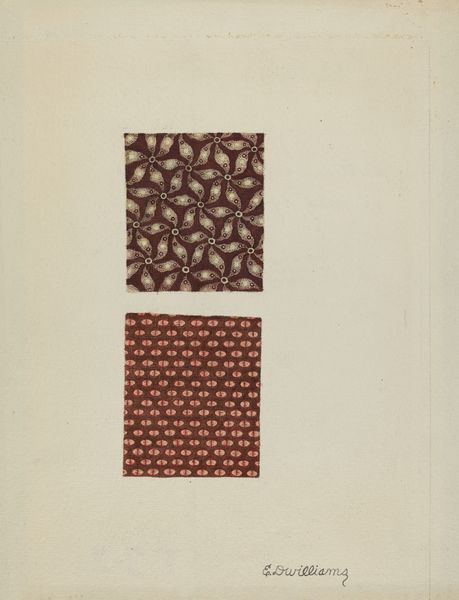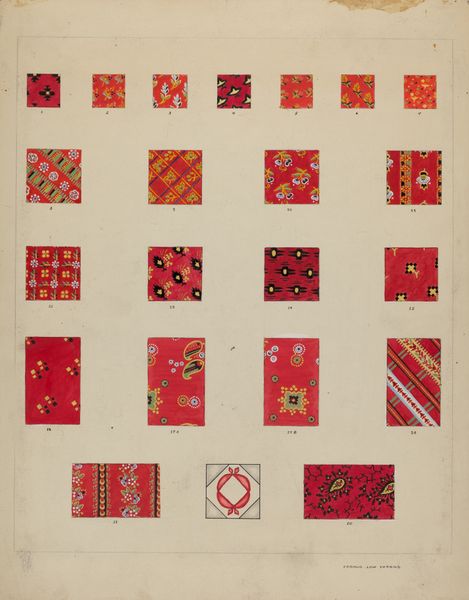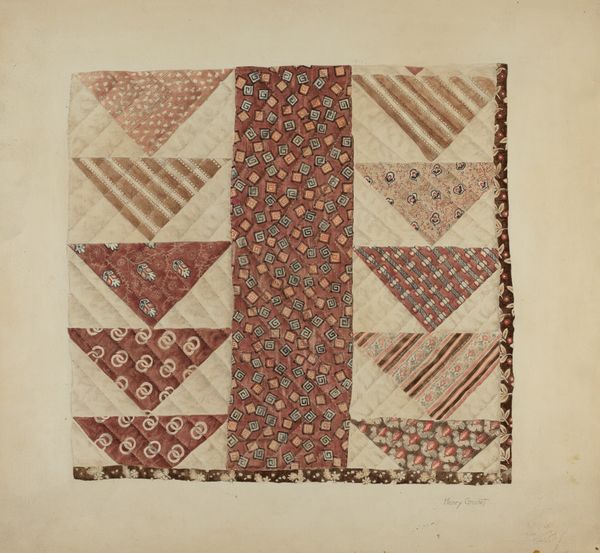
drawing, textile, watercolor
#
drawing
#
water colours
#
pattern
#
textile
#
watercolor
#
geometric
#
abstraction
Dimensions: overall: 29.3 x 36.4 cm (11 9/16 x 14 5/16 in.) Original IAD Object: 72" wide; 108" long
Copyright: National Gallery of Art: CC0 1.0
Editor: We’re looking at Margery Parish’s “Jerga (Carpet)” from around 1938, a watercolor drawing. It really plays with geometric abstraction, but it still gives this impression of textile work, like a woven surface. What can you tell me about it? Curator: This piece is fascinating because it blurs the lines between "high art" and craft. Parish uses watercolors to depict a "jerga," a type of rug traditionally made using weaving techniques. The choice of watercolor is itself telling – a medium often associated with studies or preparatory work is here employed to represent a finished textile. What does that suggest to you? Editor: Maybe that she’s trying to elevate a craft traditionally viewed as functional, something perhaps “lesser” than fine art. Was she involved with textile production in any way? Curator: Exactly! And that connection is vital. While Parish's paintings exist as independent works, considering the context of her access to textile production is very useful here. This allows us to analyze not just the visual composition but also the means of production that have brought this work to us, including who produces textiles, where, and how these products are then consumed. This is about labor, material, and how artistic practices are embedded in socioeconomic structures. Editor: So you're saying understanding the processes of carpet weaving, along with watercolor painting, are key to unlocking this piece? Curator: Precisely. The visual elements cannot be separated from the historical circumstances that made the production and consumption of this "carpet" possible. Think about the societal divisions embedded in art practices. By representing a carpet in watercolor, Parish directs our gaze to the construction, the materials, and therefore to labor itself. Editor: That completely changes my view! I was stuck on the geometric design, but now I’m thinking about the real-world object and its production. Curator: That’s the key: to think beyond the object on the wall, and see all that surrounds its making.
Comments
No comments
Be the first to comment and join the conversation on the ultimate creative platform.
